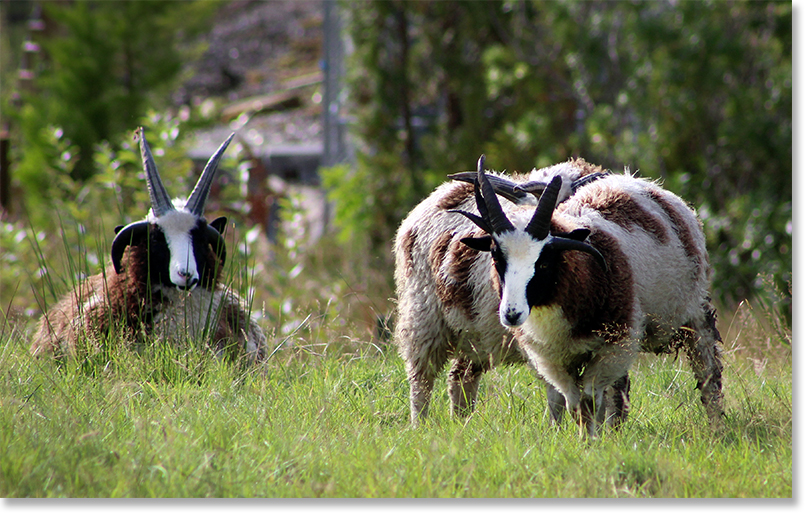|
Interview with Iain MacKinnon
The Cultural Norms of Crofting:
The Recovery of the Story and Voices of the Economy,
the Understanding, and the Life of a People
Edinburgh, Scotland
 |
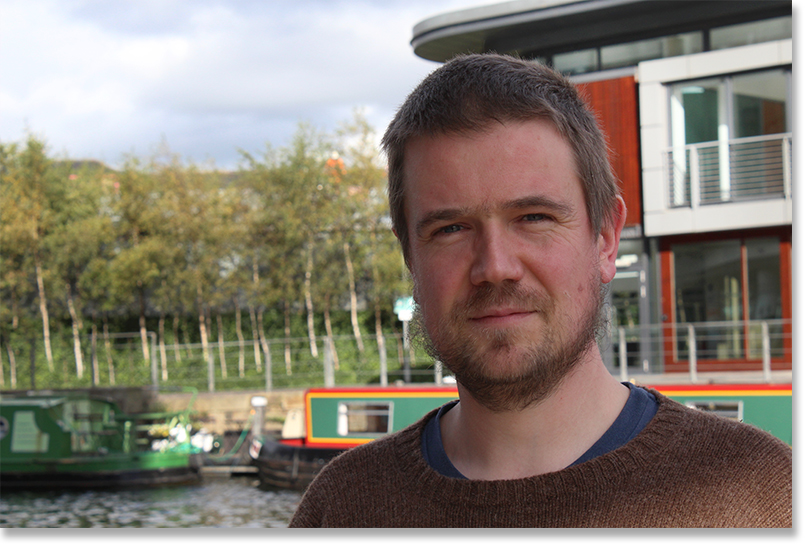 |
|
Dr. Iain MacKinnon in Edinburgh, Scotland by the Union Canal. All photos by Nic Paget-Clarke.
|
|
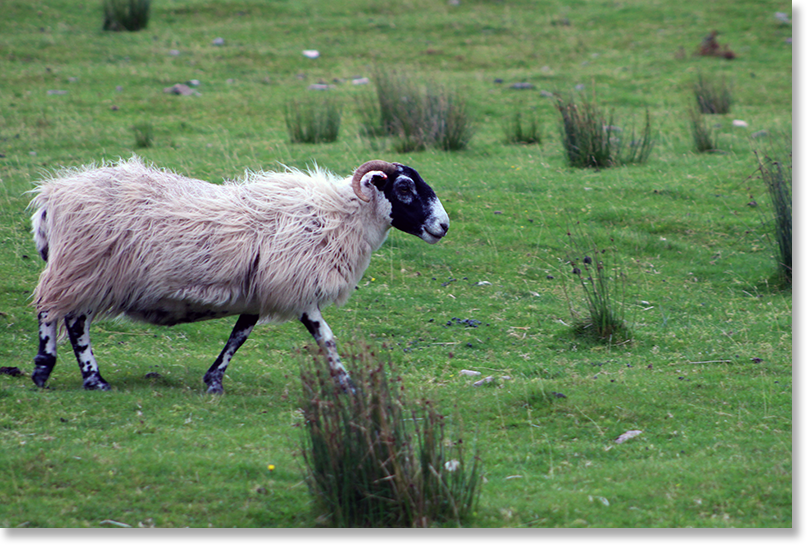 |
|
A Scottish Blackface sheep walks briskly on a wet and windy afternoon on the Highland moors of Strathcarron, Ross and Cromarty, Scotland.
|
|
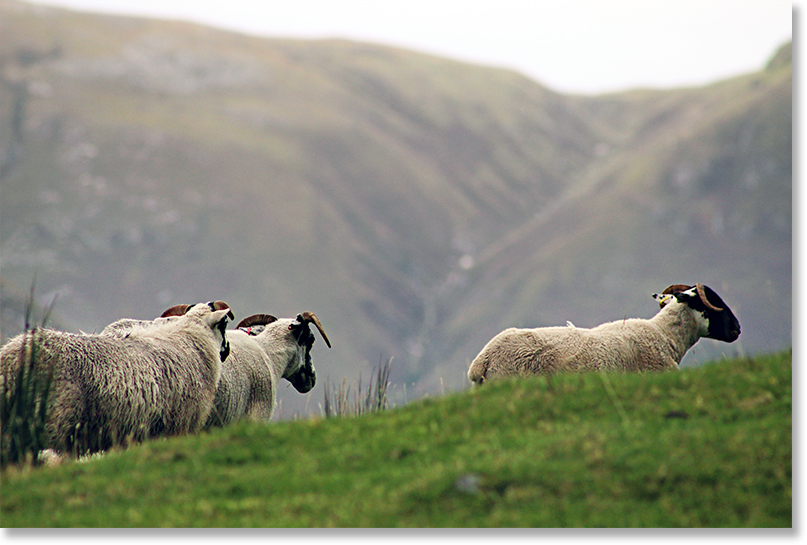 |
|
Sheep roam on a hillside in the moors of Ross and Cromarty, Scotland.
|
|
|
|
Four-horned Jacob sheep near Loch Carron, Ross and Cromarty, Scotland.
|
|
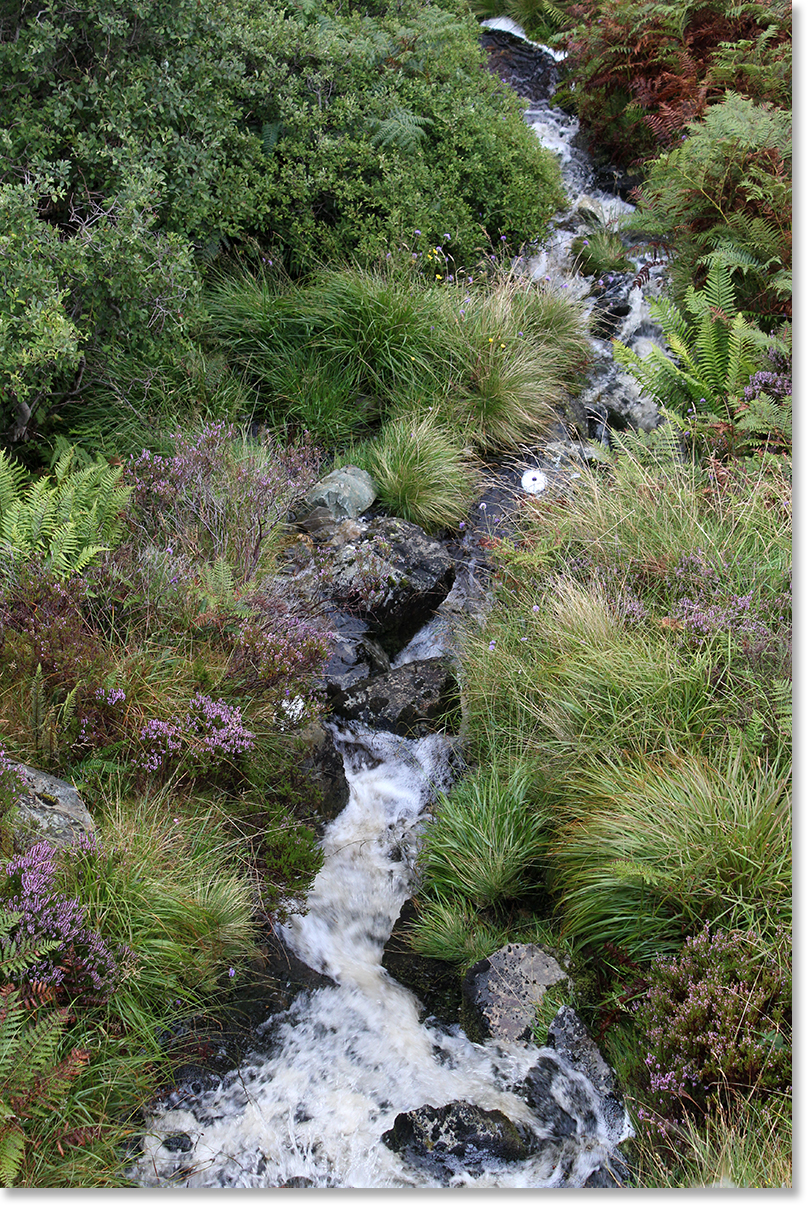 |
|
A stream runs downhill through mounds of grass, bracken, and heather on the Isle of Skye.
|
|
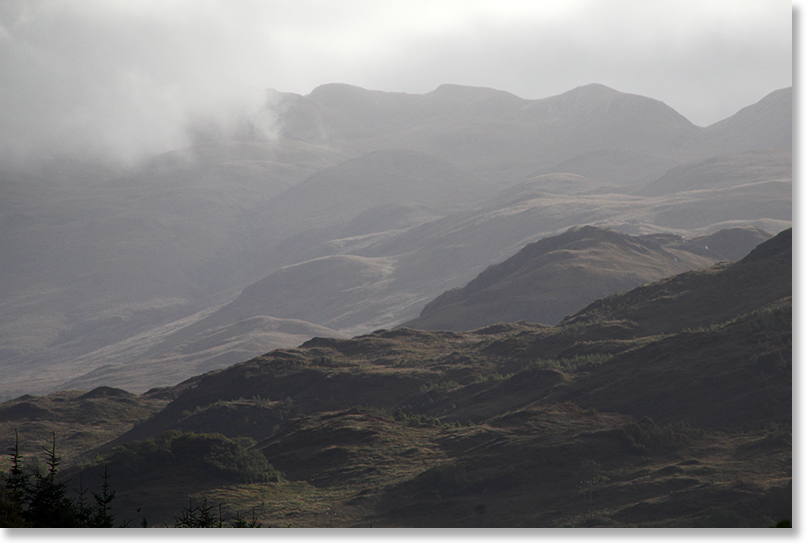 |
|
Ross and Cromarty, Scotland.
|
|
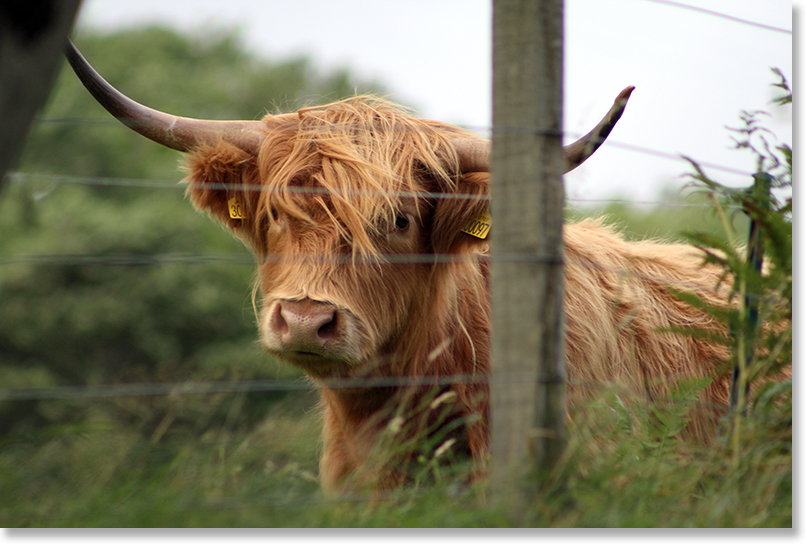 |
|
Traditional Highland cattle breed near Loch Carron, Ross and Cromarty, Scotland.
|
|
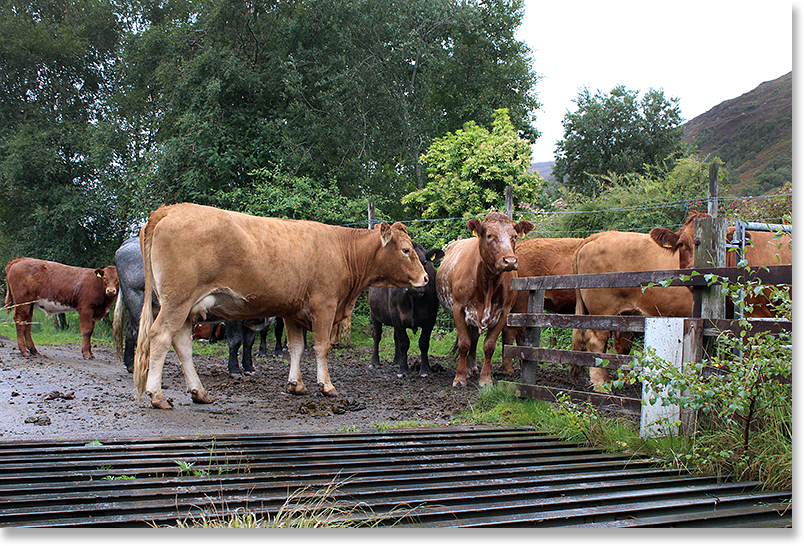 |
|
Cattle in Strathcarron, Ross and Cromarty, Scotland.
|
|
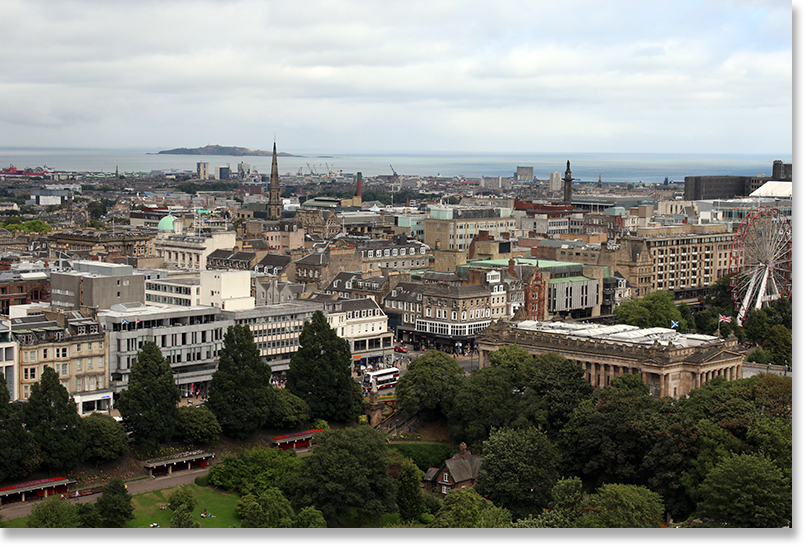 |
|
Looking across central Edinburgh from Edinburgh Castle towards the Firth of Forth.
|
|
 |
|
The River Ness passing through Inverness in northern Scotland.
|
|
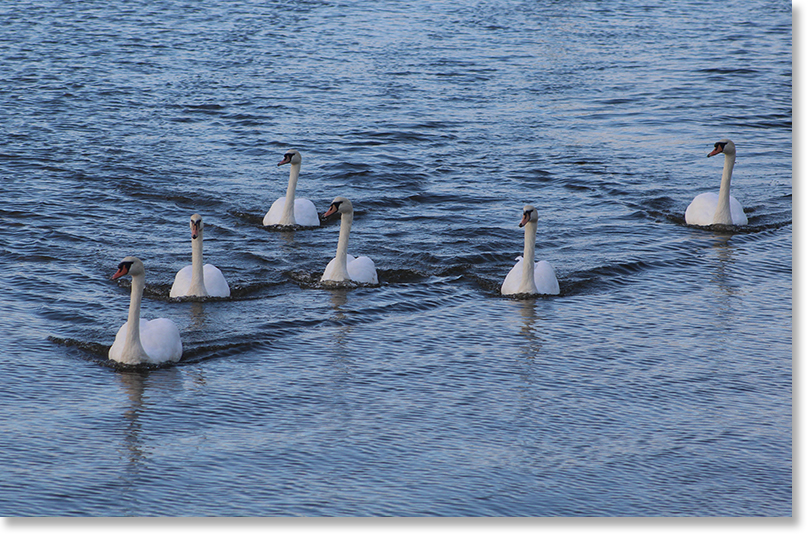 |
|
Swans swim from the Firth of Forth into the mouth of the River Almond, in the north of Edinburgh.
|
|
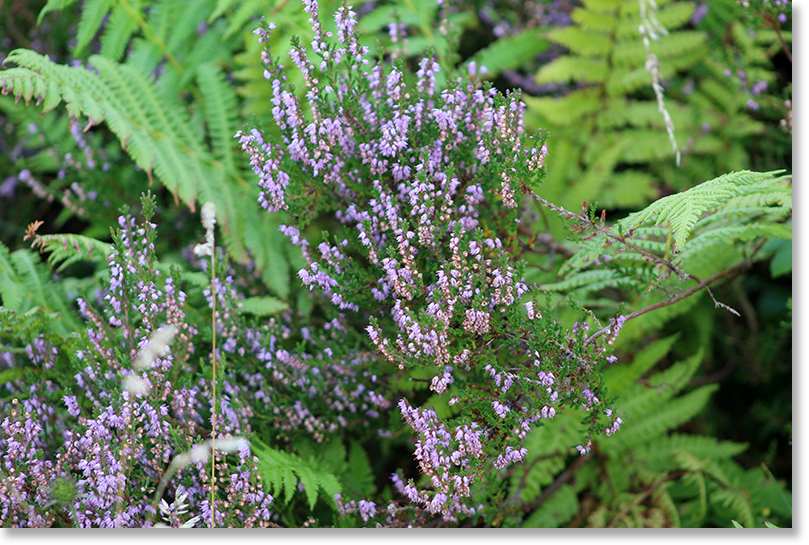 |
|
Heather and bracken (ferns) in the Highlands of Ross and Cromarty.
|
|
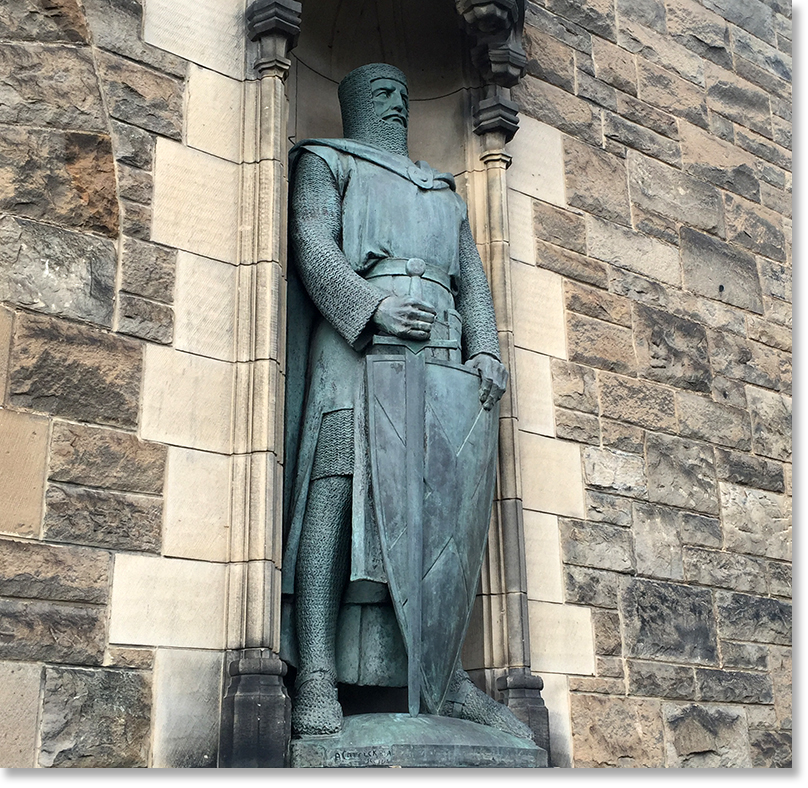 |
|
A statue of Sir William Wallace by the main gate to Edinburgh Castle. Sir Wiliam Wallace was a leader of the Scottish resistance / independence movement in the thirteenth century.
|
|
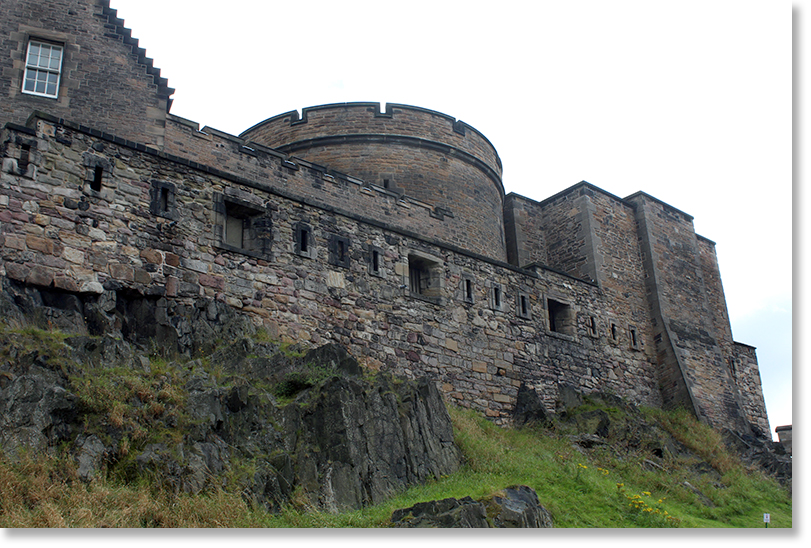 |
|
Looking up at a portion of the outside wall of Edinburgh Castle.
|
|
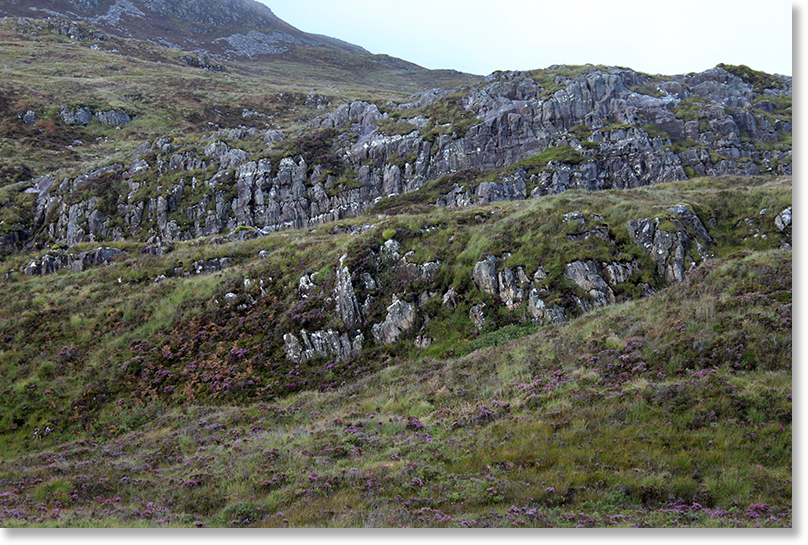 |
|
Looking up at a heather-covered mountainside on the Isle of Skye.
|
|
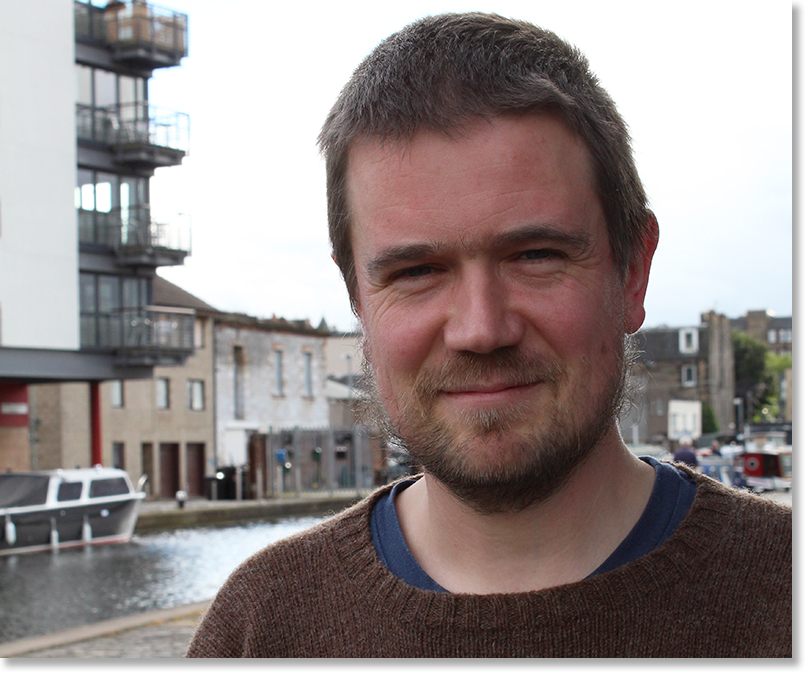 |
|
Dr. Iain MacKinnon in Edinburgh, Scotland.
|
|
|
Dr. Iain MacKinnon, “belong(s) to the Isle of Skye. I’m from a crofting family. I’m a Gael. And most of my work is trying to figure out what that might mean, personally as well as culturally. At the moment, that work has taken me to Coventry University, where I work as a researcher in the governance of land and natural resources at the Center for Agroecology, Water and Resilience that they have there.”
This interview was conducted (and later edited) by Nic Paget-Clarke for In Motion Magazine on September 5, 2016 in a café near the Union Canal in Edinburgh, Scotland.
Quick Links:
- Part 1: “I Was Being Brought Up to Get Out”
- Part 2: In the Sense of Being Gaels
- Part 3: The Highland Clearances
- Part 4: The Crofters Act of 1886
- Part 5: Community Ownership Is Becoming Established
- Part 6: Culture: We Need to Make Our Voice Heard
Part 1:
“I was being brought up to get out”
Crofting has its own cultural norms
In Motion Magazine: Can you talk a little bit about your life as a crofter on the Isle of Skye?
Iain MacKinnon: Yes. Crofting has its own cultural norms and so I’m not a crofter. At the moment, I’m a crofter’s son because it’s a form of land tenure, so my father is the tenured crofter at the moment. And one of my questions is, “Do I want to become a crofter?” And if so, “How do I go about becoming a crofter?”
There are different ways of doing crofting -- if you are fortunate to have access to enough land where it can be your primary source of income. But for most people it’s not the primary source of income. It’s probably a bit like running an online magazine. It’s very satisfying, at times, but not particularly financially rewarding. So, in terms of that, I’m of a crofting family, I would say, rather than a crofter.
I would have helped my father a lot when I was growing up, and wider with the community when we were working with the animals. My grandfather kept cattle. I don’t really remember that. I may have one or two vague recollections of cattle on the hill, but I think he pretty much got rid of them by the time I came along - he was already in his seventies then.
When I was very young, there was really only one person, maybe, keeping a few cows in the township. And I think possibly one man keeping a few sheep. So, that’s maybe two or three active crofters out of forty crofts in our township. I belong to the parish of Sleat, which is a peninsula that is the southernmost part of Skye. At the time I am talking about, the early 1970s, the population had fallen to the lowest part, to where there were 450 people in Sleat in 1971. At the beginning of the 20th century, there had been something around about a thousand people, and since the 1970s the population has risen quite rapidly again.
In the 1970s in our village, as my father would say, it was really old retired couples, and bachelors, and spinsters. There was I think one child in the place before myself and another boy the same age as me were born. It wasn’t a very active crofting community.
A transition towards keeping sheep / Soumings
There was a period after my grandfather give up the cattle, before my father then took up sheep – I was maybe nine or ten -- when we first got sheep and that in itself was a pretty big transition because traditionally Camus Croise, as with most crofting, had been a cattle township. There was a big shift generally towards sheep at that time.
Part of that was to do with national and European level policy and support systems -- headage payments. The more animals you kept, the more support you got. It seemed at that time, I don’t know know because I was a child, but it seemed there was more support towards keeping sheep. A lot of people made a transition towards keeping sheep at that point. So, we got Blackface sheep.
The crofts in our village are very small. They are only about two and a half, three acres on average. The souming is the number of animals you are allowed to keep. It is based on the size of the common grazing. So, each township has a set number of crofts and then the crofters share the common land. The size of that common land will determine how many animals the township as a whole can have and it’s divided by the number of crofts. So, we have a tiny souming.
The souming is two cows and two followers (editor: a follower is a calf up to one-year old) per croft and one of those cows can be replaced by five sheep. I think the most we ever had was twenty-two or twenty-three sheep because we have more than one croft and also not everybody is an active crofter so we were able to use a little bit of other people’s souming. Souming is your proportion of the total number of stock that your township can have.
My father and another man ran their animals together. Or they worked together. They had their animals on their own croft and when they were on the hill they ran together. And they would work collectively when it came to dipping time or shearing time or whatever. That was through the eighties and the nineties.
A roll point, in terms of population and culturally as well
Then in the nineties, things began to pick up a little bit, I would say, particularly in our part of Skye. The Gaelic College had opened in the early seventies and that was a roll point, if you like, in terms of population and perhaps culturally as well. A relatively young man called Iain Noble who had made his money in merchant banking and related to the North Sea oil boom came to the island and bought part of the old clan-owned estate.
The old Lord Macdonald died in 1970, and the inheritance tax on his death meant that his son had to give up part of the land, had to sell off almost all of their land in order to pay these death duties. It was sold off in two parts. One part of it was bought by a conglomerate of people of Macdonald ancestry from overseas, particularly in America, so that the south part of the Sleat peninsula on Skye, is owned by the Clan Donald Lands Trust, which is effectively a trust mainly made up of wealthy people living overseas who bought the land at that time.
And the northern part of the peninsula is part of Fearann Eilean Iarmain which was owned by this man Iain Noble, a great enthusiast for the Gaelic language and the Gaelic culture. And one of the first things he did after he bought the land was to set up a Gaelic College in an old disused barn complex, a big stone-built barn complex that had been built in the early 1800s, that has since become part of the University of Highlands and Islands. It’s called Sabhal Mor Ostaig. I don’t know how many students they have there now, maybe a hundred, all being taught through the medium of Gaelic – and many others doing distance learning.
So, that was really starting to take off in the 1990s and more people were moving into the area. Some young families were returning home. There was a lot more activity in the township. Particularly one family that came in who have gone back to traditional breeds of cattle, or smaller cattle, rather than keeping Limousin or Simmental, which are European continental breeds, big breeds that aren’t really suitable for this part of the world without an awful lot of expensive inputs, feeding. These people who came in now keep Shetland cows which are not nearly as big. (You) probably don’t get as much money for them, but you don’t have as many inputs and they are not as liable to get sick either. I think these people prefer not to sell their cows but keep the meat for themselves anyway.
(And) another younger couple, her family is from the place. She grew up away but she’s moved back. Her family have moved back and they keep Highland cattle, a small breed well adapted to living on the hill. There has been a return to what I would think of as traditional breeds of animals.
And that’s contentious because for a lot of the crofters it’s Blackface and Cheviots that are now the traditional breeds because that’s what they’ve known. But another name for the Blackface is the Linton, which is a place in the Borders, and the Cheviots are hills, roundabout the Borders as well - much further south with different climate and soils. That’s where these sheep came from and they were brought here in the late 1700s and early 1800s, as part of the, some people call it the Clearances, and some people call it improving agriculture. So now, people are returning to, say, the Highland cow and also the Hebridean sheep, which are much smaller, again. You don’t get as much money for them, but they are much easier to keep than the other ones which tend to die on you more often.
That’s some of the changes that have been going on in just my lifetime.
Reflect more on the deeper, historical marginalization
I didn’t really enjoy a lot of when I was growing up in the sense that I was being brought up to leave. My grandfather told my father, “Forget about Gaelic. It won’t get you off the island.” My grandfather gave Gaelic to my father, but it wasn’t given to me when I was growing up so he must have heard what his father told him. That was absolutely common for my generation and at least the one before us, and it was done for our protection -- our parents' thought that Gaelic would hold us back. They were trying to help us to 'get on' in the world. And so, myself and -- I have two sisters -- my elder younger sister and myself weren’t brought up with Gaelic. But again, partly because of this new man coming and the Gaelic College opening up, attitudes have changed. My younger sister, who is ten years younger than me, she was given Gaelic when she was growing up and there was a Gaelic medium option in the school, so she was taught through the medium of Gaelic.
My other sister, my older sister, she went to the Gaelic College when she finished university. She went back to the Gaelic College and she now works in Gaelic TV so she’s a fluent, not native, but fluent speaker of Gaelic. And I can understand it. I can communicate and get by but I’m not a great speaker.
So, there’s big changes not only in land practices but in attitudes and cultural practices, including language, that have turned quite substantially in my lifetime. I wasn’t given Gaelic, and when I was young I usually felt that crofting was a chore. It was something that I had to do. Dad needed an extra pair of hands. I can’t really say I enjoyed it that much when I was a child, and it’s only really since I’ve begun to reflect more on the kind of deeper, historical marginalization and oppression of my people and what crofting has helped to retain in terms of a sense of collectivity and a distinct sense of identity that I’ve begun to appreciate what we were doing in terms of that joint working.
And now, it’s something that I really value when I go home, and when I was living at home recently. When I was living at home I was happy to help. I was happy to go out and feed. I was happy to go out with the gathering. It has been a process of learning to love the place, and becoming part of it.
Part 2: In the Sense of Being Gaels
Tuath is a really important word
In Motion Magazine: In the James Hunter book, The Making of the Crofting Community, he talks about how crofting emerges in the period of the cotton mill and the steam engine, in other words in the industrial era, specifically not in the feudal era. Can you talk about that?
Iain MacKinnon: I would probably go further than Jim and say that crofting as an identity is not just an invention of the Industrial Revolution, but it’s an invention of the classes that led the Industrial Revolution as a means of containing what a colonized indigenous people. … there’s a strong narrative of domestic colonization, as far as the Highlands is concerned, in the late 18th century and 19th century.
I don’t think that crofting, or something called the crofting community, or the sense of feeling of community among crofters was a significant factor in leading to the land risings in the end of the nineteenth century.
I think possibly that that sense of community among crofters is as much the result of Jim’s book rather than being something that strongly existed before it. And the reason I say that is I’ve checked the Gaelic poetry that Jim recommends as a primary source for the feelings and the experiences of crofters at the time of the risings. And I did something quite simple. I did a lexical analysis of the poetry for terms of identity and specifically for motivating terms of identity and I came up with a corpus of nearly ten thousand lines of poetry. Almost all of it specifically related to the land risings or to clearance and one or two related to cultural struggles at the end of the nineteenth century. In that corpus, the word croft appeared three or four times and the word Gael appeared at least 89 times.
To me, what that suggests is the idea of being crofters, or part of a crofting community, was insignificant in the people’s feelings of injustice and why they were rising. What was much more important to them was a sense of identity that is not class-based but is ethnic or national, in the sense of being Gaels.
Another word that was being used in the poetry is tuath, and tuath is a really important word. It’s part of a lexical family. Tuath means both a place, a locality or a territory, and a collective of the people who inhabit that territory. And tuathanach, that means a kind of tenant – the tenant of the place – it would probably be the chief man, the headman of the place. And there’s also a word, the tuath-cheatharn or ceathairneach -- you would almost call it the 'country champion'. And it seems to me the tuath is the indigenous feel of the land risings rather than the crofter. Crofting as a term, even at that time, was coming from without.
I’ve not fully analyzed this yet, but my feeling is that the very term “the crofting community” wasn’t being used by crofters or their supporters. Its early uses seem to me to be coming from the landed aristocracy, and the parliamentarians, and the elite press. I suspect it’s a process of subordinization. I suspect it’s the elite dealing with the problematic identity that they held of Gaels probably still, at that time, associated with Culloden and rebellion. (Editor’s note: the Battle of Culloden, in 1745, was the final battle in the Jacobite Uprising by the people of the Scottish Highlands against the influence and government of Great Britain.) -- Also, there’s an association between land risings in Scotland and the Irish risings at that time and a real fear among some of the elite that the violence of Ireland could spread to the north of Scotland. -- Instead, the problematic native people were being turned into a class in political discourse which is more manageable, rather than this more problematic ethnic identity. Particularly given some of the racist attitudes that were being expressed towards Gaels in the nineteenth century.
Establishing colonies
Did Finlay go with you to a place called New Kelso? It’s not far from where he is in Lochcarron. It was set up by a man called Ninian Jeffrey. It was a linen manufacturing colony. … (A)fter the ’45, the Jacobite Uprising, the Highlanders, or the Gaels were said to be a threat to civilization, British civilization. The British Government said they needed to be civilized. And the means by which that was going to happen was by establishing colonies among them, and schools and protestant religion. Establishing 'habits of industry', education, etc. You had a lot of fishing villages springing up at that time. And it seems that this linen manufacturing was another way of doing it. This place called New Kelso, near where Finlay is, was one of these linen manufacturing colonies. I don’t think it was very successful. I don’t think it lasted very long. But that gives an indication of how the Gaels were being considered at that time.
So, just about 1800, you have this man, John Sinclair of Ulbster. He was a Gaelophile. On the one hand, he had a very romantic view of the way of life of the people. But on the other hand, he was a great believer in improvement and he was the first leader (president) of the Board of Agriculture in the UK. What today is DEFRA, the Department of Environment, Food, and Rural Affairs, you can say that he effectively helped to found that and it was all to do with improvement. It was all to do with bringing in and improving breeds, so that those kinds of breeds I was telling about, the Linton, the Cheviot – he was introducing them.
He wrote many reports on this. And in the reports, he is saying, “What I’m doing is establishing colonies. I’m establishing colonies on the hill land in my estate.” Or, he talked about establishing the Royal Colony of Scrabster, bringing in several hundreds of people to a piece of the northern coast and getting them to fish. To him it was a policy of colonization, and it was happening all over the Highlands - changing agriculture, building bridges, roads, canals. As far as he was concerned it was a good thing – civilization and changing the habits of the people.
To me, this is a narrative that we don’t have in our histories: that what was going on was a process of colonization in which they were trying to change not just the economy but also the way of living and self-understanding of a people. That to me is a story that needs to be told. The recovery of that story and the voices of the people who were subject to that story.
Part 3: The Highland Clearances
Exile, banishment
In Motion Magazine: Can you talk about what the Clearances were?
Iain MacKinnon: I think I agree with Eric Richards on this (Editor’s Note: The Highland Clearances by Eric Richards), in that the notion of the Highland Clearances has been overstated, or, their uniqueness or particularity have been overstated. The same thing was happening in Ireland, for instance, and it was being called clearance in the early 19th century. There was a clearance policy by the estates in Ireland and I think that even the use of the term in Scotland may have been adopted from Ireland.
If you look at the words that the native people in Scotland were using, in the poetry they used the word fògradh, which means exile, or fuadach, which means banishment. There’s a much stronger emotional resonance to those words than there is to “clearance” in English, which just kind of refers to a material process of clearing something away. The emotion of it is clearer in the Gaelic term for it.
I think that what we now know of as the Clearances were part of that larger process of colonization in which it was not just about economic improvement, as they saw it, but about changing the habits of the people themselves. And if that meant that they had to be shifted away overseas, or shifted away to the city, or shifted to poor ground next to the sea so that they could become fisherman or whatever, then that was part of how they would acquire habits of industry and become modern, become part of that Industrial Revolution.
You needed much less people
In Motion Magazine: Habits of industry -- what a term.
Iain MacKinnon: So, rather than rather than having an economy that is based on the annual cycle, you might have a very busy time in the spring, you might have a very busy time at harvest time. And then the winter time is when you mend your nets and repair your ropes and you share your stories. You would have a much more capitalist division of labor, but also of time.
In Motion Magazine: So, why were people moved?
Iain MacKinnon: For different forms of agriculture.
In Motion Magazine: Can you say what that means?
Iain MacKinnon: Down here (Edinburgh – the Lowlands), I’m not entirely sure. In Strathnaver in the very north (editor’s note: the broad valley of the River Naver in Sutherland county), there were a lot of communities, small bailes, in this very large glen. And they all would have had their own effectively subsistence form of agriculture. In the early nineteenth century those were cleared away. And in their place, you maybe had two or three large sheep farms. There was a change in the breeds of the animals and a change in the forms of agriculture that were going on that meant you needed much less people there because the whole hill would be looked after by a farmer and a couple of shepherds, rather than by, say, fifteen or twenty families.
In Motion Magazine: So, how do you clear them? Soldiers?
Iain MacKinnon: In some cases, yes. There’s several cases where the military was called upon. In other cases, people just went. In some cases, the sheriff officer would come in with a party of men and they would just clear people out and tumble their houses down.
There have been some big military confrontations -- I think (they) were much earlier on. You’ll find a lot of that in John Prebble’s work on the Highland Clearances (editor’s note: The Highland Clearances, by John Prebble). He looks at stuff that was going on in Easter Ross and other areas in the 1820s, 1830s and quite often it seems soldiers were being taken out from Fort George. Fort George is a huge military complex. It’s still big, but at the time it was built it must have been considered enormous -- just outside of Inverness. Again, after the Jacobite Uprisings and the Hanoverians built a whole series of forts throughout the west Highlands, that’s probably the biggest of them. They were there to pacify -- that’s the word that was used -- the Highlands.
Occasionally, if there were instances where people were rebelling against their removal, then the garrison from Fort George would be sent out. But that didn’t always, or even often, happen. Usually, it was just the landlord’s men that would carry it out.
In Motion Magazine: And these were English soldiers?
Iain MacKinnon: I couldn’t say. Possibly they would have been a lot of Lowland regiments and possibly even some Highland regiments.
In Motion Magazine: This was the British army though?
Iain MacKinnon: Yes, it was the British army. It was the Imperial Army. And usually the people in charge would not have been from the Highlands, or would have been anglicized Gaels.
Internal colonizing, as well
In Motion Magazine: Can you talk some more about the connection between the Gaels and the Clearances. Was it an economic question or was it more an ethnic cleansing – or is that too strong of a term?
Iain MacKinnon: There’s one or two historians who have used it. One has gone so far as to describe what has happened in the modern Highlands in terms of genocide. But that’s earlier, after 1745. The problem I really felt particularly with Eric Richards, but also Jim, though Jim has acknowledged it, is the focus on the Clearances tends to (see) the Clearances (as) a one-off event. And I think, to really understand it, we need to go back to much earlier periods of history. And the two historians I find most helpful in trying to understand this are both working in the late medieval, early modern period. So, a guy called Martin McGregor at the University of Glasgow, and another fellow at the University of Glasgow, Aonghas MacCoinnich. He comes from the end of Lewis, the next island out from Skye.
So, Aonghas has recently released work on the plantation of Lewis, on his home island, in the early 1600s, which was explicitly an act of colonization. James VI, who became James I of the United Kingdoms of Scotland and England, had a great distaste of the people of the Highlands and particularly the people of the Islands. I think at that time it wasn’t so much the Highlands or the Highlanders that they were concerned about. They were concerned about what they called the 'Islesmen' and he wanted something done about the Islesmen.
One of the major policy interventions that he took was he instructed a group who were known as the Fife Adventurers. Fife is an area just north of Edinburgh. On the other side of the Firth of Forth is Fife. So, there were the Gentlemen Adventurers of Fife. There were about a dozen of them. And they were given the right to colonize the island of Lewis -- to plant structures of civilization there.
They had an invasion force that tried to take over Lewis about four times between 1598 and 1610 and they were repelled by the Macleods of Lewis each time. Then, another clan took up. The 'gentlemen' backed off. They realized they weren’t going to succeed and another clan, the MacKenzie’s, who were on the neighboring mainland, they took on the right of colonization and they then came in. They were successful. And Lewis became MacKenzie land.
There you have the complexity of the fact that there was internal colonizing, as well. Some of the clans, from very early on, were acting as agents of the state, as Crown agents. There’s all this complexity before the period when people were being driven away, and this earlier colonialism is linked to a long process of Anglicization among the clan elites.
Sense of betrayal
(But,) there’s a key difference in between what happened in Scotland and what happened in Ireland, at this time. The colonization of Ulster, the plantation of Ulster was going on at the same time. James was trying this in Ireland and trying it in the Islands at the same time. What happened in Ireland was the native Earls or Chiefs had to leave. They were forced into exile. And so the land was then completely colonized by English and Lowland Scots.
So, in that sense the Irish, and this is to put it quite bluntly, they knew who their enemy was because the people who were ruling them and who had control of their land were culturally different. But what happened in the Highlands was, in 1608 – and this was the same time that the colonization was going on in Lewis – there was an understanding that there was a hostile intent from the Scottish Crown towards the Islands. And in 1608 there was a meeting organized between the chiefs and the Crown agents – there were two leaders of them Andrew Ochiltree and Andrew Knox who was a bishop, Bishop Knox.
And they were having this meeting and nine of the Island chiefs were invited to go aboard Ochiltree's boat for a religious service. And when they were taken on board in the harbor of Mull, the ship weighed anchor and they went off to the South and they were imprisoned. One of them Ruaidhri Mòr Macleòid [Big or Great Rory Macleod], he got wind of it somehow, so he wasn’t brought in.
(But) the rest of them were incarcerated until they agreed to sign something called the Statutes of Iona by which they agreed to various diktats. … (and) one of the statutes was that the chiefs would send their elder sons to the South for education in Lowland schools, effectively through the medium of English, and become acculturated to English-speaking norms or the Lowland Scottish norms.
There were more uprisings in the Western Isles after that and then these statutes were ratified in 1616 under the regulations for chiefs. It was much stronger in 1616. It was much more of the social elite who had to send their children away for this sort of education. And I think you can only really understand the sense of betrayal in the Clearance period -- if you can call it that, and I probably myself prefer to call it something else, probably “domestic colonization,” or “that stage of the domestic colonization process in the nineteenth century,” -- by the fact that very often it was being done not by culturally different people but by their own people.
So to me, we can’t understand that period that is called the Clearance period unless we really work through several hundred years before that. And, again, to me, to understand it, it helps to think of it in terms of a process of colonization. It’s why I found the stories or the histories of native peoples, particularly in Northern America, Canada, and the States, helpful because I see what has happened to us as a process of internal or domestic colonization.
Kelp for the Napoleonic War
In Motion Magazine: Do you think the period of the Clearances or colonization had an industrial nature?
Iain MacKinnon: I think there may have been removals and changes in tenure happening in a much earlier period, even in my part of Skye, that would probably be defined as Clearance, but isn’t really thought of in that way or hasn’t really been analyzed or understood in those terms.
But I think when you get to the later period. When you get to 1800, first of all, there was this period, short period, when during the Napoleonic War there was a really strong market for kelp because the barilla, which was a source of alkali that was used for a lot of industrial processes and it came from Spain. During the wars Britain couldn’t access the barilla any more, and the next best source they could have for the alkali was seaweed. And so, there was a lot of seaweed being taken. Rather than being used for fertilizer, it was being harvested, there was an industrial process, and then being sent away.
Jim’s got stuff on that in (his) book (The Making of the Crofting Community) and also a man called Charles Withers in his book Gaelic Scotland: Transformation of a Cultural Region on how that process happened. It seems in both of their analyses the vast majority of the money was going to the landlords and it was a pretty grim existence for those who were (involved in it. But) a lot of the Clearances, round about 1800, was being done to facilitate that process.
In Motion Magazine: They needed it for the war itself?
Iain MacKinnon: For the war. It was used for gunpowder but maybe not at that time. It was used for various forms of ceramic or glass production. I’m not sure what (exactly) but it was used for industrial processes -- some of it may have been related to the war effort, part of it was for the general commerce.
And the other thing I suppose that was with the industrial revolution, was that all these sheep coming in were a source of wool for the mills. So, it would have been directly connected to the industrial revolution through that.
Part 4: The Crofters Act of 1886
The break-up of social and agrarian clan structures
In Motion Magazine: The Crofters Act in 1886 – was it a victory, a reform? Were there crofters before the Act?
Iain MacKinnon: Looking at the testimony to those commissions that responded to the land risings that led to the Act, you have people saying, “Yes, the place was full of crofters back in the 1740s.” I don’t know if that could be true. I don’t know if that is how they referred to themselves.
In Motion Magazine: They were serfs?
Iain MacKinnon: Oh no, no, no. It was a clan society. People regarded themselves differently. If you look back at even someone like Edmund Burt, who was an English engineer who came to the Highlands after the first Jacobite uprising in the 1720s, he was here in the 1720s. He is saying that even the meanest of them regard themselves as a gentleman greater than any English aristocrat. It was a tribal society and people saw themselves as being directly related to the chief and the chief effectively had, I think, semi-divine status still at that time - at least for some chiefs in Burt's time. Under inauguration they effectively became a king, in terms of the tribal mentality of the tuath. I don’t think people considered themselves to be serfs – oh no. I think that the class-terms came in with crofting. That came in with the breakup of older forms of social and agrarian structures, into an individualized form.
One of the big things with crofting as a way of holding land is that land that had been re-allotted every few years, suddenly became yours. A lot of times in the early years they weren’t calling them crofts, they were calling them lots. You were allotted this land but under what we call crofting you were allotted it permanently, whereas previously you might have it for two or three years and then it would be reapportioned.
And also -- and there’s a really good book in Ireland on this, because again there’s much more similarity I think than Scottish historians allow between what was happening in Ireland and in Scotland -- a man came into the very west of Donegal, which is by sea very close to the southwest Highlands of Scotland, and he reapportioned the estate. He reapportioned the land into these narrow strips which you see all over the crofting region. And before then, this new Irish landlord, he was talking about this “barbarous system”. He said, “There’s little bits of land all over the place. I can’t make any head nor sense of it, so I’m apportioning it along rational lines.”
A different form of social rationality
He just wasn’t aware of their rationality because these little bits of land -- and there’s still areas in the west Highlands where the crofts aren’t fully individually apportioned -- with these strips each person got a good bit of land, a medium bit of land, and a really poor bit of land. I believe it was to assure some kind of fairness because if you give just a strip then that person might end up with a really good strip of land and then their neighbor two or three down might just be in a bog. There was a different form of social rationality going on -- a much less market form of rationality. And that was all just swept away as barbaric, as undeveloped, or primitive, when the crofting system was set up along much more economic lines.
Although, having said that, in crofting terms, our township, until about twenty years ago was called an open township. It wasn’t a closed township. And that means that you would have your animals on the hill during the summer and you would grow a crop. So, you might grow some potatoes and you might grow hay for feeding during the winter. And, say in April or May when the crop is starting to come, the animals would get put out on the hill. So, at this time -- from around April onwards -- each individual has their own crop on their own croft.
In Motion Magazine: The in-by?
Iain MacKinnon: Yes. You would have sole use of that for six months over the spring and summer. And then you took your crop in in September, October and the regulations dictated that you had to have the crop in by a certain date. Then, at that point, all the animals come back into the village. And, if you had fences in your village, you had to lift the gates off your fence so that the animals could go in and out all the croft. That is an open township.
Effectively, you only had sole use of your croft for six months of the year and the other six months it was still a collective and if all the cows of the township want to go on your croft and graze on your grass, well, that’s just what happened. The good point of that is you get all the manure from that for next year’s growing. So, you might want that.
And so, that sense of collectivity, it wasn’t just wiped out by the imposition of crofting. There were forms of – and I would call it what James Scott called it, “The weapons of the weak.” They are just forms of small acts of resistance to maintain their sense of their culturally distinct ways.
There are still a lot of open townships, townships where you have to do that. In fact, I heard of one where someone coming into the township was told in very blunt terms, “No, you will not keep this croft to yourself over the winter. And, at the end of October, or whenever, you will take the gate off of its hinges and if you don’t do that we will do it for you.” It’s still being practiced.
These little things, which I had not been aware of but now I'm learning about, I think have been very important in terms of understanding the collective mentality that we still have, which is the mentality of the tuath. It’s about being part of a tribe, a collective.
Alternative systems of land tenure
In Motion Magazine: Do you give significance to the Crofters Act?
Iain MacKinnon: I give a lot of significance to it. My own view ... is that crofting is a form of native title.
In Motion Magazine: Which means?
Iain MacKinnon: In Australia, there was a case, the Mabo Case in the 1980s, where an aboriginal man, Eddie Mabo, challenged the right of the Australian government to say that they owned all the territory of Australia. He said, “We have our own pre-existing system of title,” and we have rights based on that. It’s a form of native title -- it’s alternative systems of land tenure, I guess, to the prevailing state-based property system and there are certain entitlements that run from that.
Certainly, if you look at the legal and political authority of the time when the Crofters Act was passed in 1886, again it is just a mess politically. It was passed by Gladstone, but then the government failed almost immediately. He was a liberal, and the conservatives came in led by Lord Salisbury, and Salisbury said, just after the passing of the Act -- and I think he was in Edinburgh when he said it -- that the landlords had abused the older understanding of the people in the Highlands and that the Act was to restore the clannish system of tenure.
And then the Crofters Commission, which was set up to oversee the establishment of the crofting system, said it respected the old form of title code, duthchas, which is really important conceptually, and cosmologically a(n) important word in Gaelic tradition.
Cosmologically ... in Gaelic tradition
In Motion Magazine: What’s the cosmological aspect of that?
Iain MacKinnon: It comes from the word dùth which means, land. It also means, what’s natural or normal to a person. A person in Gaelic is duine, and that means, one who comes from the land. Your dùthaich is your homeland. It’s that part of the world that you belong to. And your dùthchas is your sense of belonging to that homeland, and your sense of responsibility for that homeland, which in time was also understood as your right to be there. So that, effectively, was your right to tenure, if you’d like. Another word in the same family is dùil which means nature or the created order. It also means hope. One of our names for god is Rìgh nan Dùl. That helps give a hopeful outlook for people that believe.
And all those ideas come together and they are related to other ideas like dualchas, which is similar but it is related to your family knowledge, the stories and songs that help you to make sense of who you are. Explicitly, it was in defense of their dùthchas that the people were acting in the 1880s. They were saying that, and the government acknowledged it.
We don’t think of it in that way today, and it’s long since crofting ceased to be a proper hereditary system of tenure. Anybody can get into crofting. But, initially, when it was set out, you had no right to transfer the tenancy of your croft. It could only go when you died and it would go to your immediate family member, probably your eldest son. That then changed in 1955. The right to assign your tenancy was enabled, which meant that it helped to open up a market for croft land.
I don’t know whether Finlay mentioned it, but certainly that is one of the things that exercises people today, that croft land is being sold on the open market -- sometimes for over £100,000 as house sites for people who can afford it. Certainly not young people in crofting areas.
But it’s also important to acknowledge that ultimately those sales are coming from crofting families, traditional families in many cases -- but not always.
Their indigenous right
In Motion Magazine: So, Salisbury recognized that they had made a mistake?
Iain MacKinnon: Salisbury argued that the landlords -- by which he meant the chiefs -- had broken the old understanding of tenurial relationships, and the Crofting Act was a means by which the non-landlords, the tenants or tuath, the crofters as they became, would reestablish their right to land, which they viewed as being their indigenous right. And Lord Napier in his report that led to the Crofters Holdings Acts of 1886 (editor: the report of the Royal Commission of Inquiry into the Condition of Crofters and Cottars in the Highlands and Islands) confirmed that a belief in that right existed pretty much universally in the minds of the people.
So, for me, the Crofters Act is important because it allowed us to be here in a way that we probably would not have been were it not there. … (and) what remains, what still exists of our culturally distinct ways, have been preserved because the people are still here and have an at least partly commons-based land system to learn about the land from.
And significantly, and more politically, I view it as a form of native title. It reflects a different understanding of the world, and how the world should work. And the British Imperial Parliament was forced to recognise that in 1886. I think that moment of recognition has been legislatively abused in the hundred and thirty years since then, and the legislative abuse has also been challenged. There’s a constant contestation. And it’s an unequal contestation because the indigenous aspect of it isn’t really considered because all the law-makers are mored and mired in the norms of Scots law and its property system.
Every time crofting law comes to be reformed, it’s a challenge because the ideas that are coming in are generally coming in from without and are generally based on the prevailing norms of property and Scots’ law, rather than coming from the beliefs or the understandings of the indigenous population.
In Motion Magazine: And the Act was passed because of the resistance to the Clearances?
Iain MacKinnon: Yes, both the people's memory of what had happened to their families and communities earlier in the century and, more directly, to other forms of landlord oppression that were still going on in the 1880s, such as removal of grazings rights that the people considered to be theirs since time out of mind.
Part 5: Community-Owned Land
The right to buy the land for the people
In Motion Magazine: I’ve heard there are two recent waves of land reform. Can you talk about that?
Iain MacKinnon: I think what is being meant is there have been two pieces of land reform legislation passed in the last 15 years.
The first legislation was heavily influenced by two estate buyouts, in Assynt and on the island of Eigg where there were very clear narratives of absentee landlords, injustice, neglect of land, and the impoverishment of the local populations. In both those cases there were separate campaigns to buy the land for the people. Assynt was 1995, and Eigg was 1997, and building on that when the Labor government got in power in ’97 it made land reform a priority, and when the Scottish Parliament began in 1999 it made land reform, I think they called it, a flagship policy.
So in 2003, a land reform act was passed which had three main parts:
The “right-to-roam” – a much greater right for people to walk on land and less rights for estates to prevent access to land.
And then, there was a general community “right-to-buy”, which was seen as weak and ineffective. I think the view was that the demands that were imposed in order to trigger it were very onerous. The main weakness with it is, it was a “right-to-apply-to-buy-land.” A community could buy land if the land was put on the market, but they had to have already registered their interest in that land. So if, say, a community near Edinburgh wanted a piece of ground, they could apply to buy it but there was no right to buy until the land was going to be sold anyway. That might never happen. It was really a weak piece of legislation.
And the third part of it was, “the-crofting-community-right-to-buy”, which gave the crofting community an absolute right to buy even if the landlord didn’t want to sell. The crofting community had an absolute right to buy all the croft ground plus, I think it was up to ten percent of contiguous ground to the land that was under crofting tenure. And that again was really complicated and difficult to use. I think it’s only ever been used once. (But) the landlord took it all the way to the highest court in the land because he claimed it was a breach of his right to property and that court ruled that it wasn’t in breach of his right to property. The right to property is a qualified right and it has to be balanced against other rights in the public interest.
In fact, I think that legal case really helped to give traction to the second land reform bill because it could be seen from the case that the first Act wasn’t working very well, in the spirit of the law. The second one I have not followed this closely because I’ve been looking more at matters of history, but it strengthened some of the existing provisions and added new provisions. And it’s not all come through the land reform act, some of it has also come through the Community Empowerment Act (2015).
It’s quite complex but it’s equalized; in the previous legislation crofting-communities had a much stronger right to buy than anywhere else in Scotland had. Now it has been much more equalized. Other communities now have a much stronger right to buy. Presumably all that will have to be tested through the courts because the landlords won’t be happy about it.
<70 to 80 percent of the population on community-owned land
In Motion Magazine: It seems there is a trend of crofters getting together and buying out the estate, the landlord, completely and running the land autonomously. Is that true and what do you think of it?
Iain MacKinnon: Yes, although the way the law is set up it is usually the whole community that buys the land, rather than just the crofters. Generally it seems to be working well, and I’m in support of it. It’s complicated because crofters have had that right for quite a long time, but haven’t taken it. I think on the back of what happened in Assynt and what happened in Eigg, and the movement of land reform up the political agenda, it’s encouraged more groups to think about it.
We are now in a situation where I think something like fifty percent, maybe more than fifty percent, of the land in the Western Isles -- the Outer Hebrides, Lewis, Harris, Uist, Barra: the islands beyond Skye to the west -- is in community ownership and most of that has happened in the last 15, 20 years. That’s something like 70 to 80 percent of the population on community-owned land.
It seems to me striking that that’s happened in the place where Gaelic culture and language is least weak, if I can put it that way. I suspect there’s a connection between those two things.
Elsewhere, I don’t think it’s been happening to the same degree. There have been one or two in Perthshire. There’s something going ahead in Wanlockhead, which is down much further south. But it’s not happening in such a big way there yet.
There’s a very effective representative organization called Community Land Scotland which has been going for five or six years now, probably. Jim Hunter is very closely involved with it and a fellow called Peter Peacock is their policy officer and he’s a former Labour government minister [Peter Peacock retired from his CLS post in January 2018 and was replaced by Calum Macleod, another very able person]. Peter was very influential in the latest land reform act. They have a very strong team and some really good people on their board who are already empowered because they are already managing community-owned estates. There’s a real strength there.
A re-establishing of relationships
It’s established, at least in parts of Scotland, it’s established. It’s not even that people are thinking about it – people are doing it. (Editor’s note: According to the web site of Community Land Scotland, approximately 563,000 acres of land in Scotland are currently owned by communities.) But it’s a question of, if we can see this process of material and cultural attrition coming -- you know, you had the Lowland Clearances first and the Highland Clearances, and then the Gaelic culture surviving in the Islands -- if we now have this process where community ownership is becoming established, how does that wave roll back in so that community ownership becomes much more the norm throughout other parts of Scotland?
I think it will be difficult because the kinds of informal community bonds that I was talking about earlier, in terms of people working together and just being close with one another, have been lost. Even in Skye, I think they have been very significantly lost because the community has changed so much and maybe the old practices and ways of thinking and doing things have become much weaker. Perhaps the new ways just aren’t encouraging. The strength of relationship isn’t there yet for that to happen. I think before we can make the leap to start taking control of the land, there needs to be a re-establishing of relationships, an understanding of what the land is there for.
And I suppose coming back to the interview with Gregory (Editor’s note: See “Interview with Gregory Cajete: Science From A Native Perspective: How Do We Educate for A Sustainable Future”) when he’s talking about the relationship to the land, that’s very strong in Gaelic traditions as well. I think reacquainting ourselves with our own traditions, our own poetry, and music, and song – well, that is there, it is really strong in that, and can help us to understand the cultural importance of not so much taking control of, although that’s part of it, but taking responsibility for our own place because our own sense of who we are is bound up in that. At least that is the meaning of duthchas for me.
Part 6: Culture: We Need to Make Our Voice Heard
Practices that are inherently unsustainable
In Motion Magazine: How would you compare that Gaelic culture to the surrounding, for lack of a better word, capitalist culture?
Iain MacKinnon: Well, firstly, all Gaels are deeply entangled and embedded in capitalist culture. It’s everywhere and I think it’s something we need to now consciously articulate. We need to make our voice heard because otherwise we will simply become more and more submerged in the different forms of communicated dominance by which the norms of a capitalist and neo-imperialist society dictates how we are to live. Dictates what’s normal. Dictates what’s usual.
I think there’s a lot going on that is still part of that different way, but like with crofting, with the idea that this is about crofting, that, to me, misses something that is much deeper. Crofting, today, is an expression of it. And I think it’s that deeper thing that is why I’m looking to reconnect for myself because I wasn’t brought up with it - it was just there in the background, rather than being explicitly given.
But also, I think, culturally, if that sense of there being something different, something in terms of our relationship to the Earth -- to come back to the global issue -- as the living Earth, as the source of our life which is something we can draw out of the tradition, we need to consciously articulate that sense of being alive, and to criticize the capitalist practices that we are all involved in. Because, (and) it’s really difficult for me to say it, because, for instance, it’s the kinds of sheep-breed that the great majority of crofting people whom I respect and love have chosen to keep -- that is one way in which we are part of the capitalist economy. We can’t maintain those breeds without bringing in feed from elsewhere and without involving ourselves in practices that are inherently unsustainable. We become a very small part of the capitalist economy that has marginalised us on the land, and destroyed so much culturally and is catastrophic ecologically to the planet.
When we take our animals to the market, … it’s great, it’s a really enjoyable day, but at the same time we are the bottom end of the capitalist food chain. Those animals go off to the South where they get fattened and they get sold for a much bigger price because they are going directly to the processers or retailers. We are right at the bottom of that and we need to escape that.
I think some of the work the Scottish Crofting Federation (SCF) is doing in this regard is excellent. They are taking the bull by the horns, as it were: supporting efforts to relocalise food systems and making some uncomfortable criticisms of the dominant agricultural systems that so many crofters have got caught up in. One of the important things they are doing is to start presenting these projects and critiques in terms of food sovereignty, and agroecology. I think both of those concepts are really important for the SCF to express as an organization, and for people who are crofting, and for Gaels who value their traditions, to grapple with. It’s very uncomfortable. Probably this kind of political radicalism is costing the SCF members. It’s probably costing them some political support because many of the traditional crofters may feel uncomfortable with the implications of what something like food sovereignty means, or even what something like agroecology means, because of the practices we are now doing.
But for me, in terms of that bigger picture, and not just from the global level, but also for ourselves locally in the long term, we can’t carry on that way. There is no future that way. We need to start thinking about ways of living in our own lands that don’t harm other places and that don’t harm our own place. We need to articulate those, with a critical eye on the capitalist economy of which we are a part, and also being constructively critical of our own alternatives; given that there is no fully-developed coherent alternative to capitalism at the moment, globally.
Agroecology and food sovereignty
In Motion Magazine: Why would people be against agroecology or food sovereignty?
Iain MacKinnon: Well, because it’s probably easier to keep, at the moment, a large breed of cow or sheep. The majority of crofters who do that, do it very well. I’m thinking particularly of the crofters in the Outer Hebrides. The animals that they are producing are really good animals, but they will be requiring large amounts of inputs to produce them. As soon as you are doing that -- Where is that coming from? What is the cost of that? Those are the kind of questions that food sovereignty and agroecology ask that probably a lot of crofters don’t think about because they are just focused on rearing their animals. And likely they will come to believe what they’ve been told by the agricultural press -- such as the Scottish Farmer or the Press and Journal's Agricultural Supplement -- which overwhelmingly focusses on 'improved' breeds' and for farmers in quite different ecological settings. The Scottish agricultural industry is generally geared up for Lowland systems and those are considered, historically, the better, 'improved' systems, to which Gaels should aspire. The Government focusses its support in that way too. Through the agricultural press and Government funding systems, these are the messages crofters are getting, week in and week out and we've had literally centuries of this kind of talk.
Thinking in terms of agroecology and food sovereignty turns this talk on its head. Agroecology focusses on family farming, traditional practices and small-scale innovation, rather than on industrial expansion. Many agroecological researchers support agricultural systems that work with what is available locally and which can be sustained with a minimum of external inputs. As an approach, its viewpoint is that farming needs to work within, and help to sustain, a wider ecosystem of which it is part. Not only that but, as I understand it, agroecological farming practices are considered part of the diversity of the human cultures of which they are part, and so they have the potential to nurture cultural diversity and identities.
In my opinion, this way of thinking about working with land and the things of nature has the potential to revise some of the prejudices that have accumulated around practices and beliefs found in many traditional cultures which have been for a long time castigated as backward. It helps to give them a new justification, and to rehabilitate them.
The idea of food sovereignty takes this further, bringing in multiple issues of power to examine who decides on how our food systems work, and who benefits from them, from primary production right through to retail and consumption. The groups that have pulled together the principles of food sovereignty are working with social, ecological and cognitive justice goals - they are challenging us to think about how food is produced, and where it comes from, and perhaps more importantly, about what those kinds of production and distribution systems say about the food that we eat - about what food is and how it fits into wider cultural norms!
This sounds radical but, combined, it is an approach to working with land and natural resources that might help us to make sense of the related ecological and social crises of consumption that human food systems are helping to cause; for me, food sovereignty and agroecology proponents are asking searching questions about the politics and ethics of the prevailing industrialised approaches to food, and these questions are growing in relevance and require careful consideration.
In particular, they do also ask uncomfortable questions about the way that we croft these days too.
We've got a bit comfortable with the story of plucky crofters doing this and fighting for rights, and maybe we have come to rest on our laurels a bit. Maybe we just need to push that story a little bit further to take us into the future. I see my own work as part of that push.
Crowd fund for an abattoir
In Motion Magazine: I see among some people in different areas, different countries, the desire to develop smaller economic and agricultural units and not be forced into or surrounded by a market system and culture which is basically corporate and works against small farmers, driving them out of business. Do you see this kind of dot-connecting, in regards to crofting, where most crofters have to creatively be involved in other income-generating activities. Do you see it in political processes such as Brexit versus European Union, or even Scottish independence?
Iain MacKinnon: To me, the movement for Scottish independence is a liberal independence, if you like, whereas the move towards United Kingdom independence, Brexit, is conservative independence. There is a big difference between them.
Europe is just too big for me to have any firm thoughts on. There was a time in the ’90s when it was conceived of as Europe of the regions. And I think … the ideology behind it, or the ethos behind it, was much less about centralizing structures and trying to devolve power.
And certainly, if you think of it in terms of the Highlands and Islands, we had what was called Objective One Status, which meant we were considered one of the most deprived areas in Europe. -- This was before the Eastern member states moved in and have changed the relative status of deprivation. -- And huge amounts of infrastructure came into the western Highlands and Islands, including the main road through my parish, as a result of Objective One funding. That has changed perspectives in parts of the Highlands.
In the last referendum on Europe, back in the seventies, the Western Isles was one of the areas that voted to leave – but we didn’t leave at that time. This time, along with the whole of the rest of Scotland, we voted to stay. And I suspect, in the Highlands at least, part of that change will have been a recognition of what Europe has brought, and to a degree still brings, to Scotland.
So, I’m skeptical of the blame being attributed to Europe in that. I think that there are elements within Europe which are quite progressive that way, in terms of agricultural policy, but there are very strong vested interests on the level of the nation state which are blocking that. Even in the case of the neonicotinoids, the chemicals that are being used in farming that are harmful to bees; there are plans for a full ban on them to be passed at the European level -- it is individual member states, including the UK, who are saying no, who are vetoing that.
I don’t fully understand it. I think it’s more complex than it being the European Union’s fault. There’s a lot wrong with the European project; it's just that I’m not convinced that a bunch of nation states operating in a more unregulated way in a free market system -- which is what Britain is wanting, or at least what the Conservatives seem to be wanting -- is going to be a healthier option than the EU. Although there is a great deal with the EU that isn’t working, on that level, I don’t think it’s good either way.
But where there’s hope is in the fact that people care so much about local food production that they are prepared to crowd fund for an abattoir and the rise of local abattoirs in the west Highlands in the last twenty years. There were new hygiene rules which closed one in Skye about 25 years ago and we’ve been trying to get one back there ever since. The fact that people are still campaigning and working away to do that is hopeful, even though the larger context is hostile to a lot of these efforts. Some say a big part of the problem is EU 'red tape'; but they seem to manage, for instance, small-scale processing facilities in other parts of the EU, so I'm not convinced by that argument.
A provision for new crofts to be created
In Motion Magazine: Does this growth of communities of crofters buying up the land give hope or possibility to the idea of villages re-growing, of people moving back into a semi-countryside?
Iain MacKinnon: ... Yes, the seeds of some of those ideas are there. And two little quotes. One of them is by a woman from the Assynt buyout, she said that once they bought the land their imaginations were unchained. That was her quote. And that is in Alistair MacIntosh’s book Soil and Soul and I would recommend that book.
And the other was on Radio Scotland recently, a man called David Cameron, he was the first chair of Community Land Scotland. He talked on BBC Scotland, a couple of months ago, about what was happening on Harris – that’s the place that he comes from. And he said something along the lines of, “Magic happens when you own the land yourself – something magic happens.” And I think that is about as firmly as you’d want to put it.
There’s a process of liberation and a process of magic going on. The thoughts about what can be done enter into people’s minds in a way that you can’t do when it’s the private property system. And that doesn’t matter when it’s private property on a grand scale, or private property on a small scale, because it’s no longer about “me” or “I”, it’s about “we” and that’s the tuath -- the tribe coming back to life for the 21st century.
Published in In Motion Magazine February 4, 2018.
Also see:
- Interview with Finlay Matheson
Crofting: The Concept That There Should Be Lights in the Glen Again
Strathcarron, Ross and Cromarty, Scotland
- Interview of Duncan and Kath Fraser with Fiona Mackenzie
Crofting: In This Strategic Place
Toscaig Township, Applecross Peninsula,
Ross and Cromarty, Scotland
- Interview with Fiona Mandeville of the Scottish Crofting Federation
A Hegemony of Helping and Looking Out for People
Kyle of Lochalsh, Ross and Cromarty, Scotland
- Web site of the Scottish Crofting Federation
- Interview of Adam Payne of the Landworkers’ Alliance
Change in Rural Culture, Small Farms, and Hedgerows
West Dorset, England
- An Interview with Kate Fletcher
The Lives of the Users of Clothes
"What the future looks like"
Santiago, Chile
- Interview with Gregory Cajete
Science From A Native Perspective:
How Do We Educate for A Sustainable Future
Albuquerque and the Turquoise Trail, New Mexico
- Interview with tibusungu 'e vayayana
Political Deputy Minister of the Council of Indigenous Peoples
Reconstitute Different Tribes, Different Peoples in Taiwan
Taipei, Taiwan
- Interview with Jadwiga Lopata and Sir Julian Rose
Of the International Coalition to Protect the Polish Countryside
The Small and Middle Family Farm:
A Base for Poland to be Independent, and a Base for Good Quality Food
Stryszów, Poland
- Interview with Yanet Alarcón, Mauricio Parada, and Pedro Huayquillan
Defending the Ancient Trails / the Culture
Chos Malal, Neuquén Province, Argentina
|






